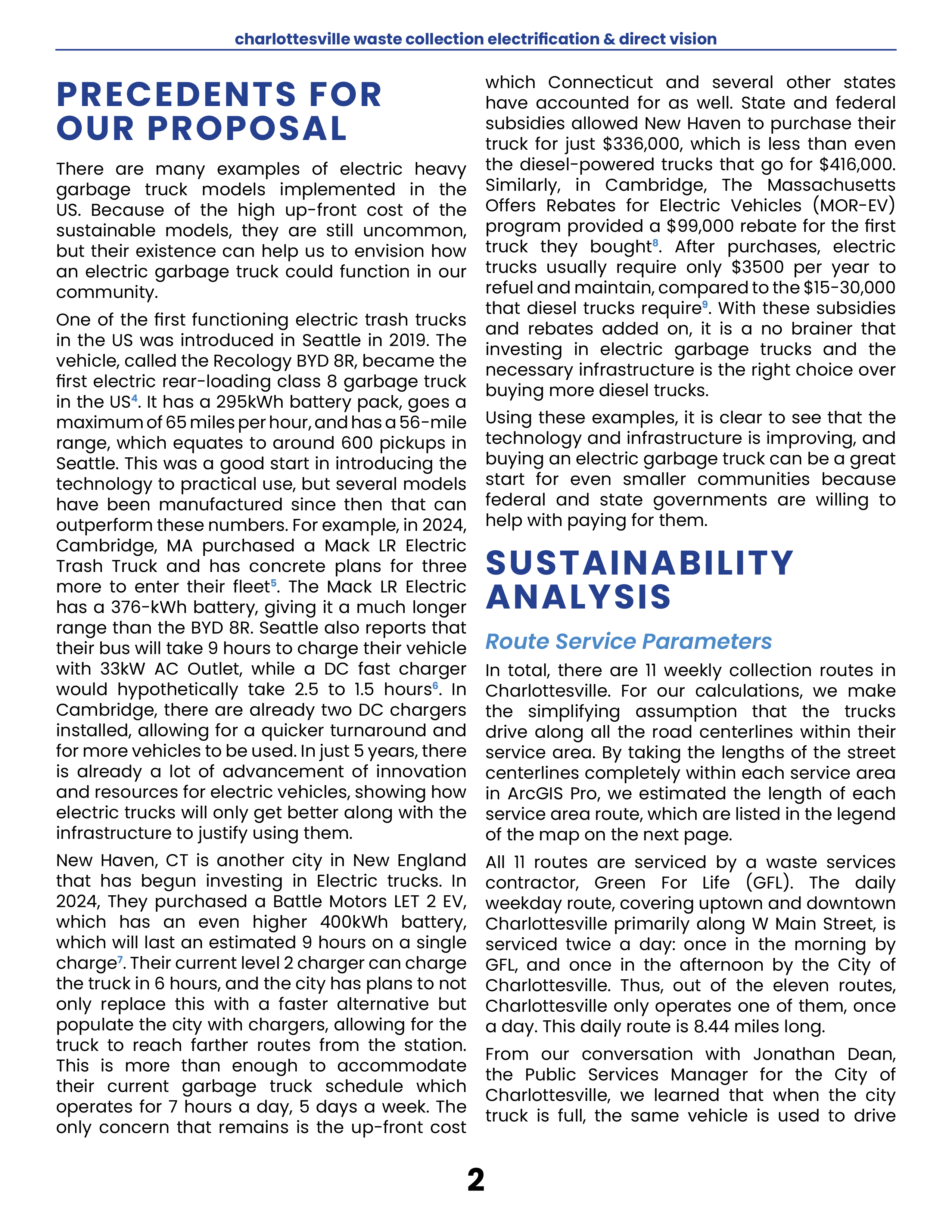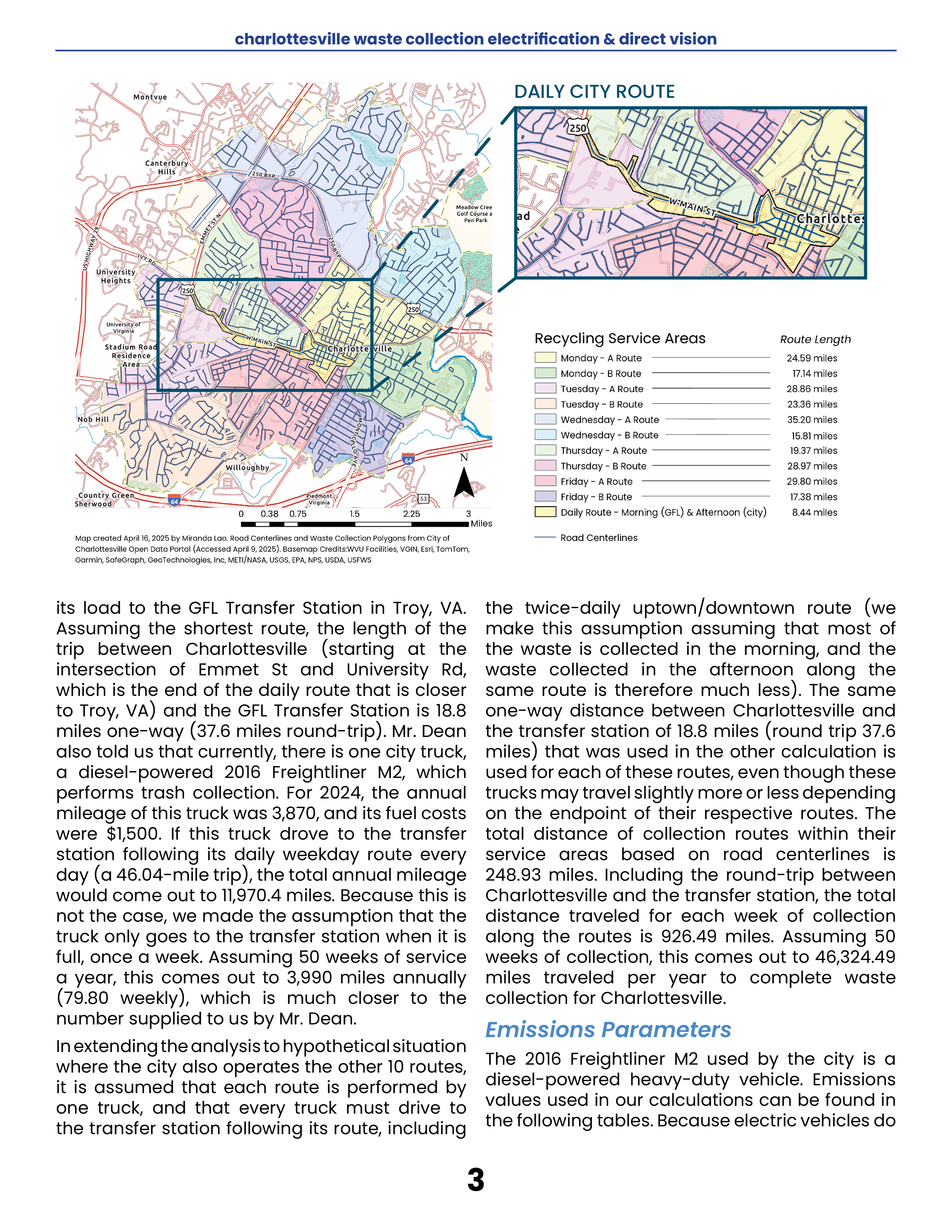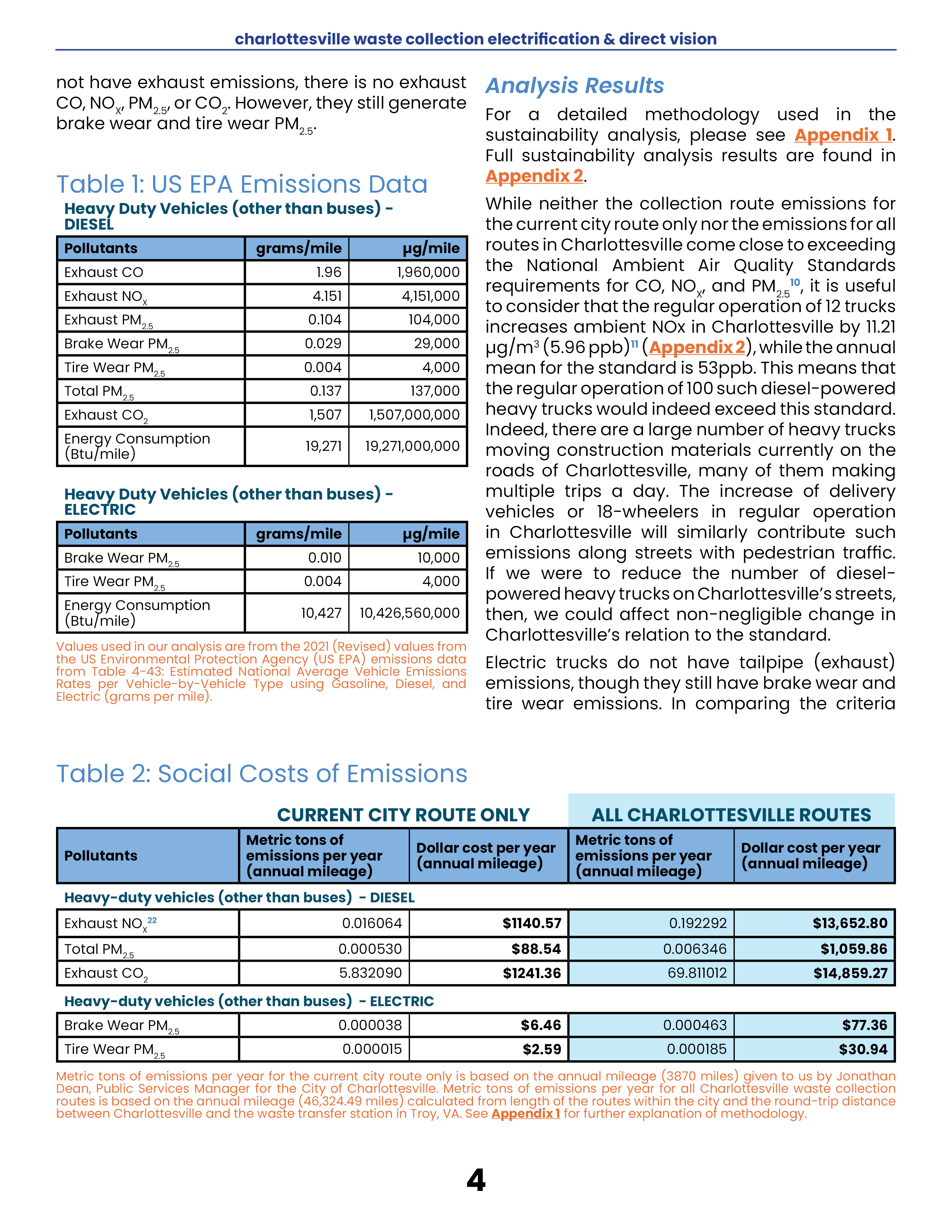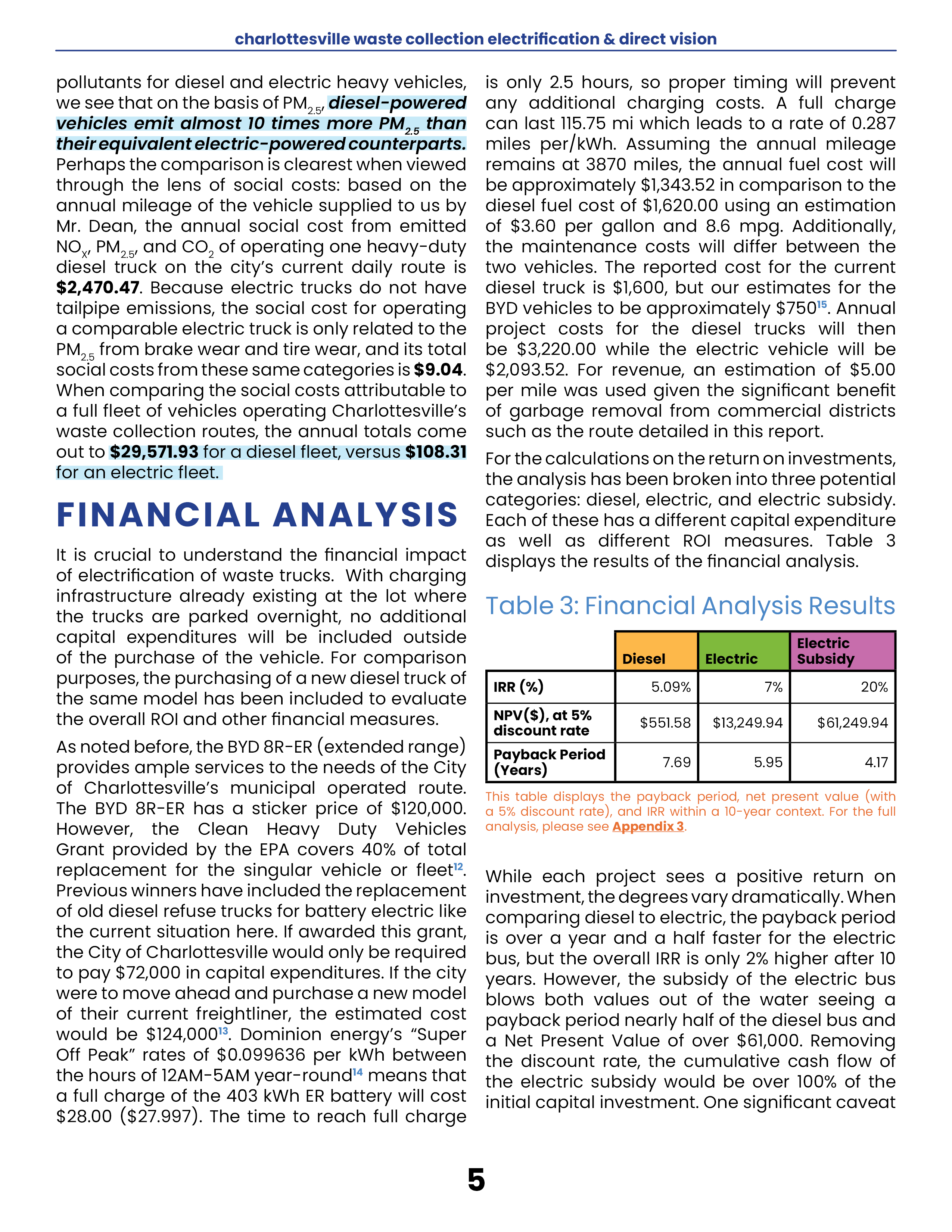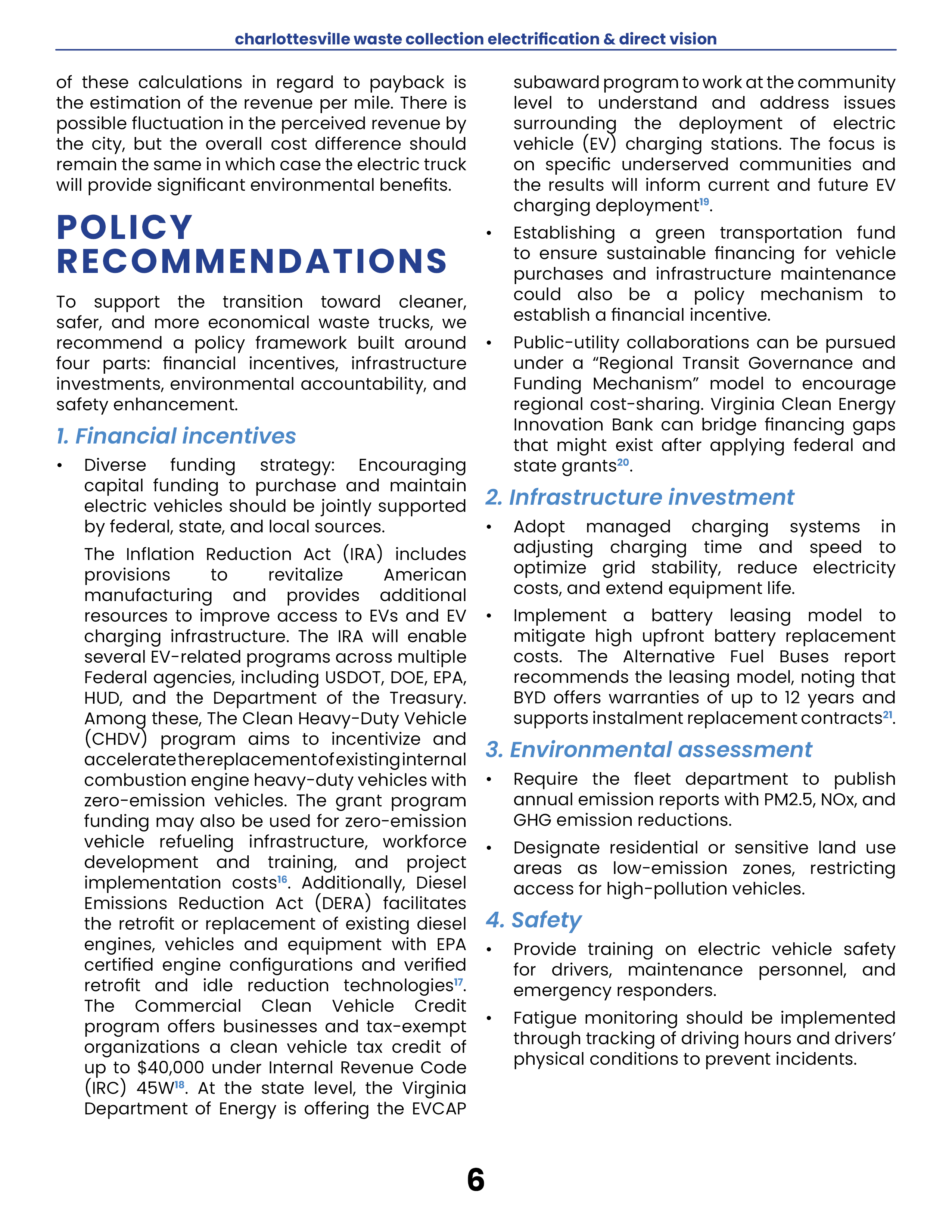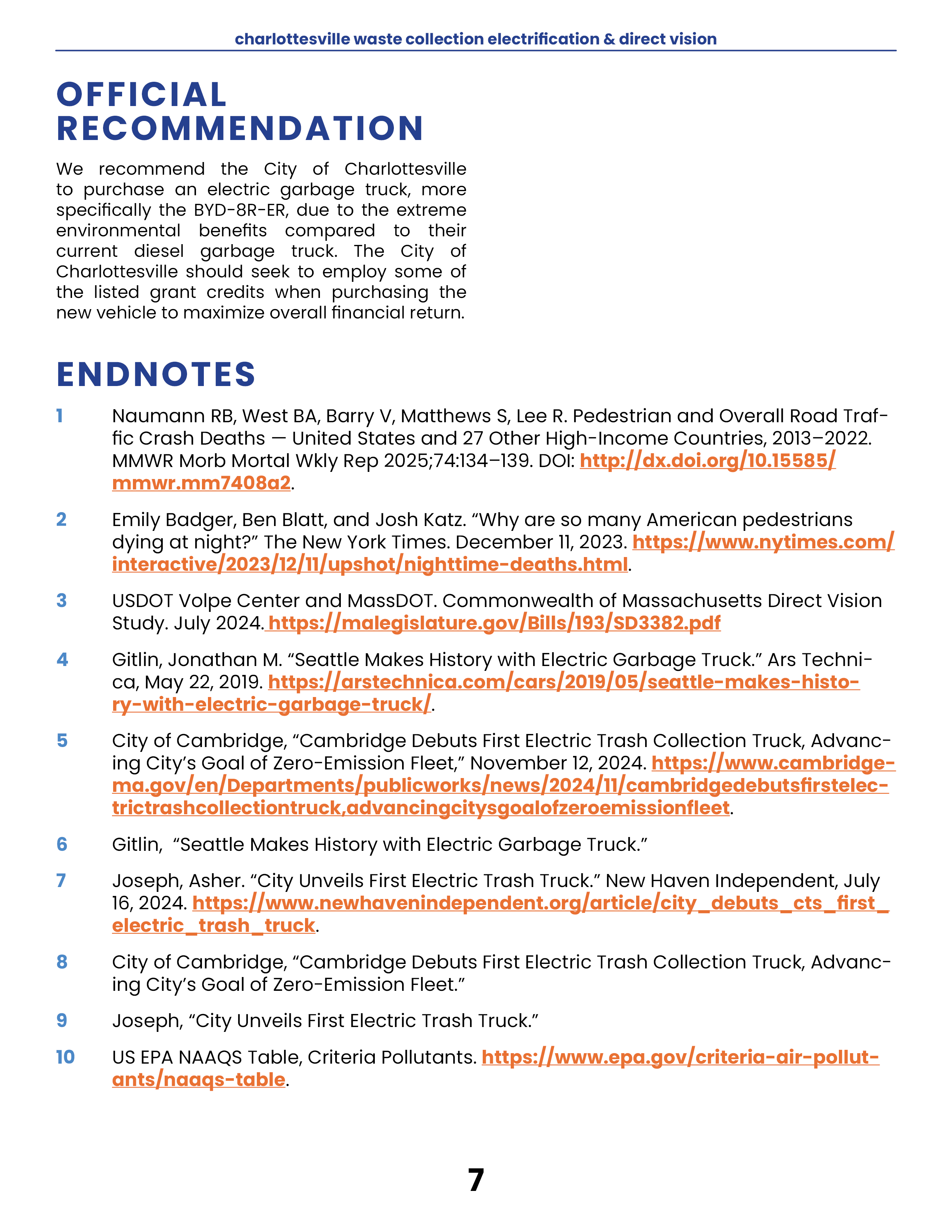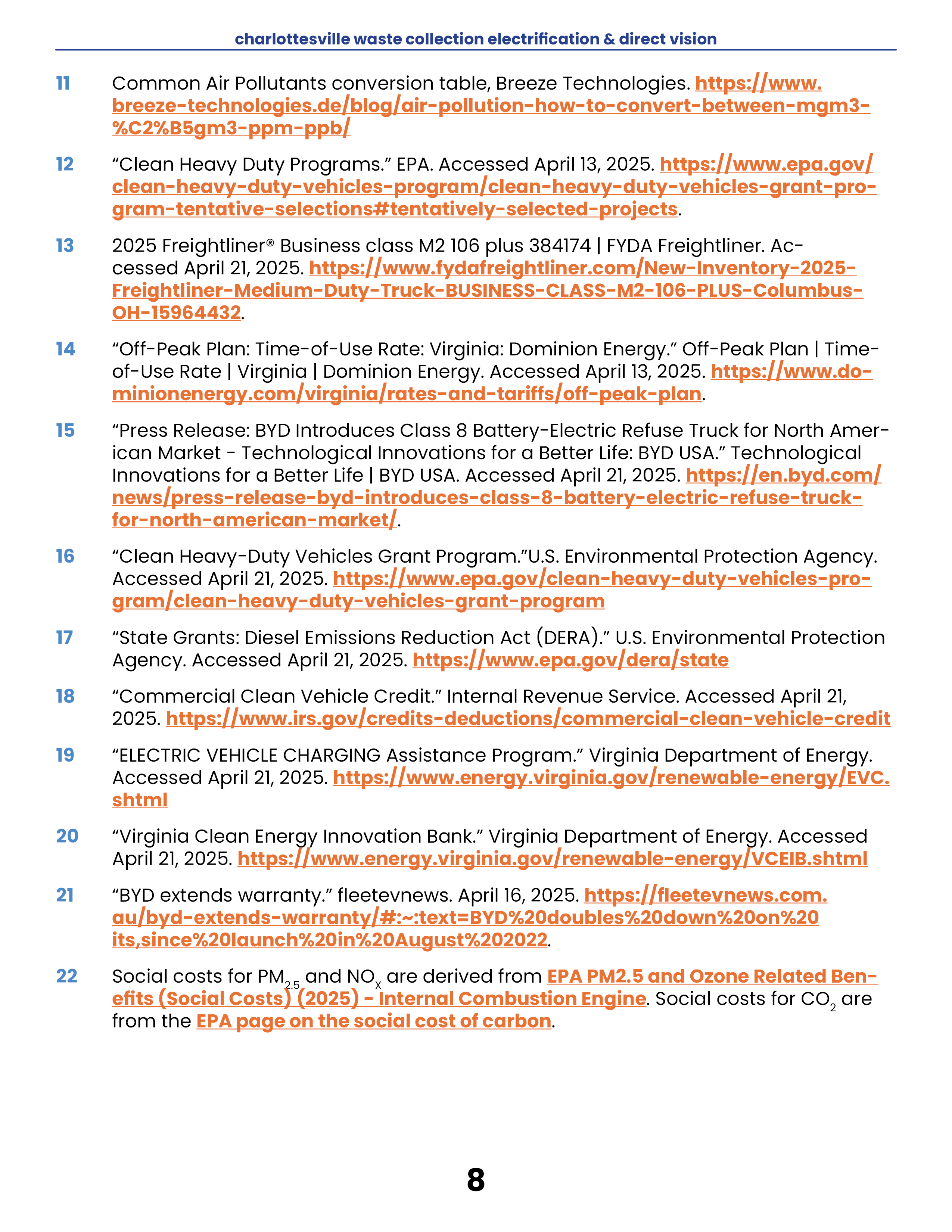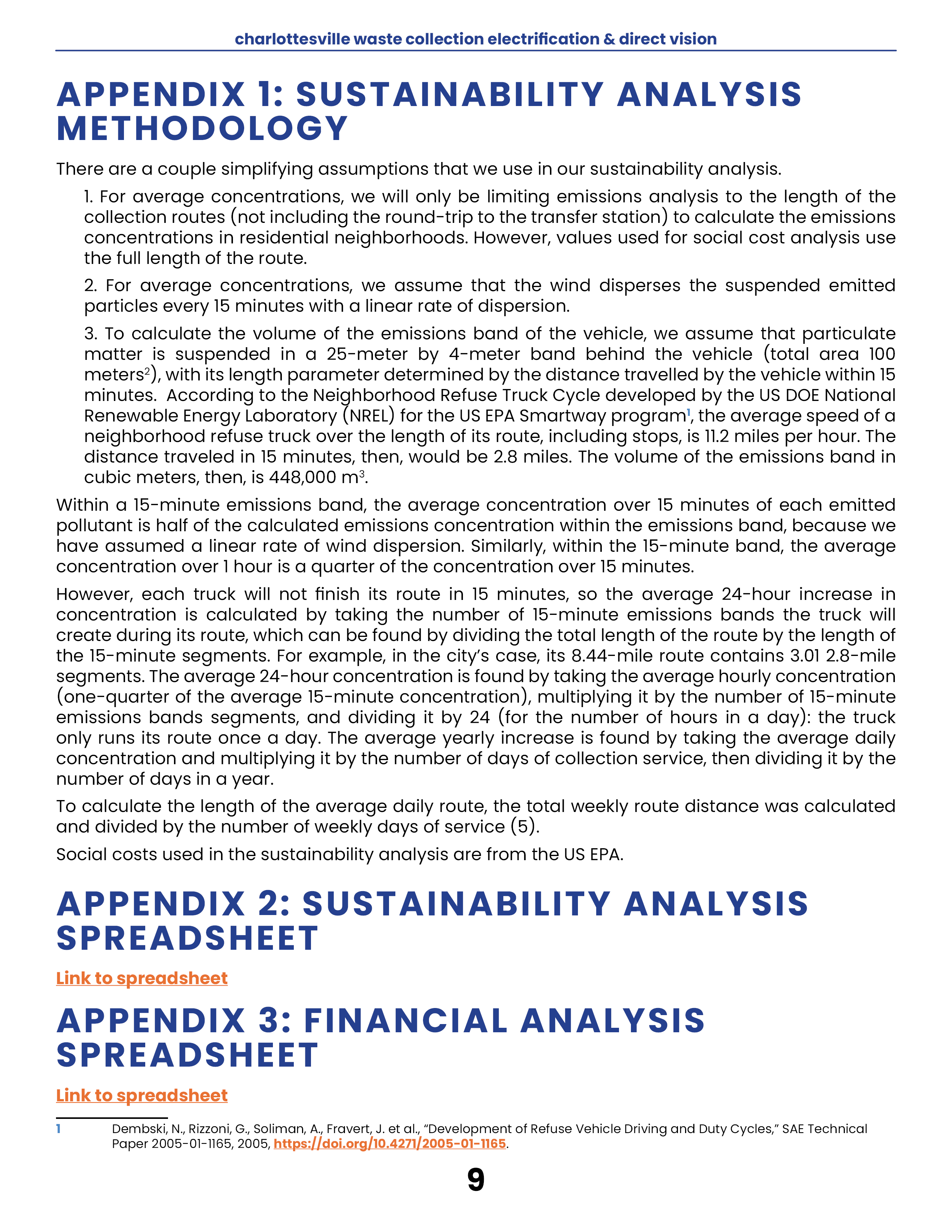Charlottesville Waste Truck Electrification
Spring 2025
University of Virginia
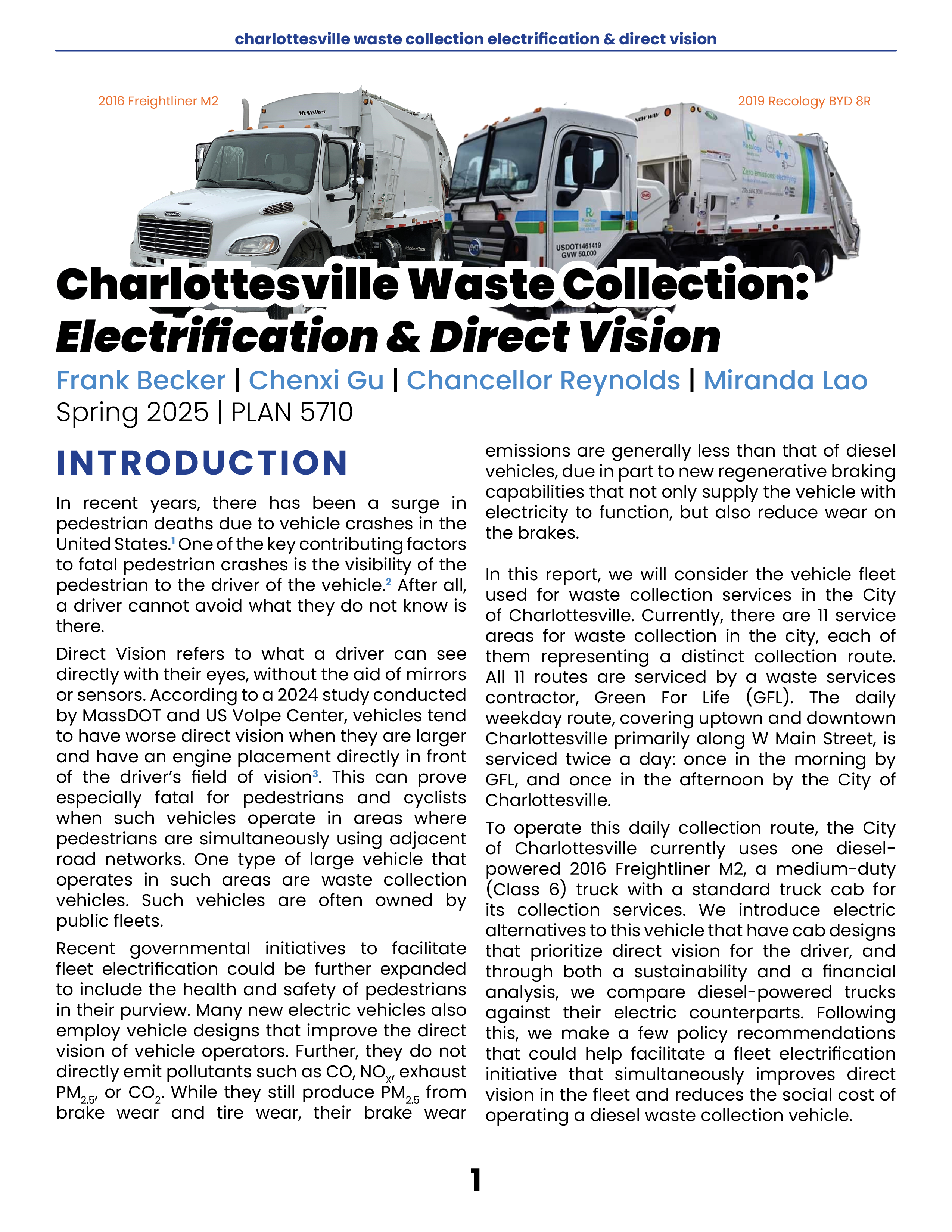 This work was done as part of the Spring 2025 course Transportation and Environment.
This work was done as part of the Spring 2025 course Transportation and Environment.
In recent years, there has been a surge in pedestrian deaths due to vehicle crashes in the United States. One of the key contributing factors to fatal pedestrian crashes is the visibility of the pedestrian to the driver of the vehicle. After all, a driver cannot avoid what they do not know is there.
Direct Vision refers to what a driver can see directly with their eyes, without the aid of mirrors or sensors. According to a 2024 study conducted by MassDOT and US Volpe Center, vehicles, especially in the case of larger utility vehicles in municipal fleets such as trucks, tend to have worse direct vision when they are larger and have an engine placement directly in front of the driver’s field of vision. This can prove especially fatal for pedestrians and cyclists when such vehicles operate in areas where vulnerable road users are simultaneously using adjacent or shared road networks. One type of large vehicle that operates in such areas are waste collection vehicles, which are often part of public fleets.
Recent governmental initiatives to facilitate fleet electrification could be expanded upon to include the health and safety of pedestrians in their fleet considerations. Many new electric vehicles also employ vehicle designs that improve the direct vision of vehicle operators. Further, they do not directly emit pollutants that trucks with internal combustion engines (ICE) do. While they still pollute particulate matter as a result of brake and tire wear, brake emissions are generally less than that of ICE vehicles, due in part to new regenerative braking capabilities that not only supply the vehicle with electricity to function, but also reduce wear on the brakes.
In this report, we consider the municipally-owned vehicle fleet used for waste collection services in the City of Charlottesville. Currently, there are 11 service areas for waste collection in the city, each of them representing a distinct collection route. All 11 routes are serviced by a waste services contractor, Green for Life (GFL). The daily weekday route, covering uptown and downtown Charlottesville, is serviced twice a day: once in the morning by GFL, and once in the afternoon by the City of Charlottesville. To operate this daily route, the City of Charlottesville currently uses one diesel-powered 2016 Freightliner M2, a medium-duty (Class 6) truck with a standard truck cab (engine in front of driver) for its collection services. We introduce an electric alternative to this vehicle that has a cab design that provides better direct vision for the driver (a cab-over engine design). Through both a sustainability and financial analysis, we compare the current diesel-fueled truck against their electric counterpart. Following this, we make a few policy recommendations that could help[ facilitate a fleet electrification initiative that simultaneously improves direct vision in the fleet and reduces the social cost of operating a diesel waste collection vehicle.
The full pdf can be found here.
